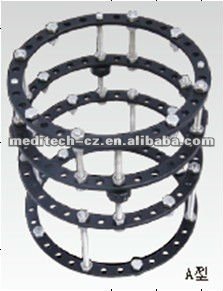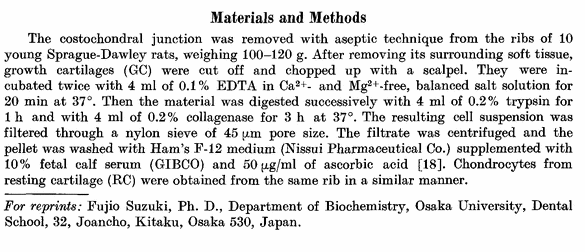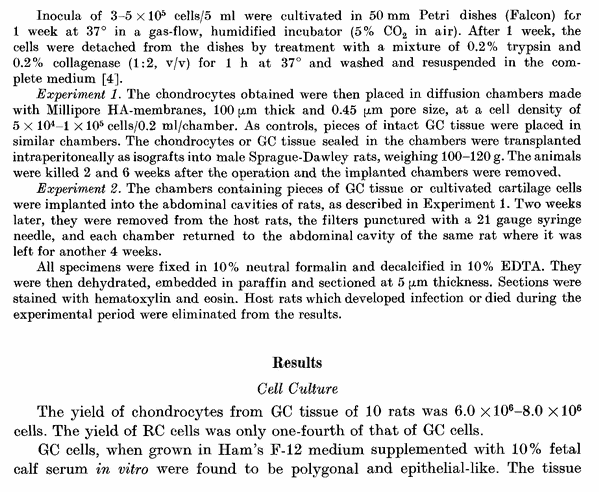We have already discussed quite extensively the idea of vertebrate and spinal decompression as a way to increase height, even if it is just temporary. Apparently one of the easiest ways to get our vertebrate/spine decompressed is through Spinal Decompression Therapy. From my own rather superficial research (at this point) of this other way of therapy, the name really says it all. The therapy is to decompress the spine.
Analysis & Interpretation:
I would use three resources to look at the viability and practical usefulness of the idea of using spinal decompression therapy to possibly increase height. The websites from Wikipedia, WebMD, and the website for the American Spinal Decompression Association.
In terms of its medical benefits the spinal decompression therapy is a type of motorized traction that is used to help relieve back pain. The spine is slowly stretched. From the stretching, the amount of force being exerted on the area of the disks is decreased. This means that it might be possible that through the slow decompressed traction any type of bulging or herniated disk will be removed and the disk can go back to it’s less loaded form and heal. The spinal nerves that the herniated or bulging disk that it was touching will no longer be touching anything else which means that the pain trigger is not set off.
The 4 main types of issues that this non-surgical spinal decompression therapy is used to treat include.
- sciatica
- bulging/herniated disks
- spinal joints that have degenerated
- exposed or degenerated spinal nerve roots
Keep in mind that this type of physical therapy involves having a mechanical device that pulls different parts of the body away from each other. There are many other types of physical therapy which can probably also help with decreasing or alleviating back pain. Besides just the actual device being used to expand the body, the application of other familiar technologies like (electricity) PEMF , (ultrasound) LIPUS, and heat or cold is applied to relieve pain of assist the traction machine.
Overall, the technology is used to treat issues from the neck or lower back. The pulling causes the vertebrate to separate from each other causing a little bit of space between the stretching vertebral areas. The space that is induced will through successive treatments over a 2 month time period is theorized to cause any bulging or herniated disk spinal nerves to be retracted back into the vertebral spine cavity and result in no more nerve touching nerve. From the American Spinal Decompression Association they suggest that the repeated process of intervertebral cavity induction will result in water and nutrients moving from outside the vertebrate inside the spinal column to heal any fractures or holes made from the original decompression.
As for its medical application, the researchers and studies seem to suggest that it is probably more effective in relieving back pain than doing nothing at all. When it is compared to other vertebral/spinal decompression types of therapy, its effectiveness in being better than the others is hard to validate.
Implications For Height Increase:
What we find form the 3 main sources used is that apparently inversion therapy is a type of non-invasive spinal decompression therapy. Inversion therapy is basically using either the gravity boots and hanging upside down on a horizontal bar/pole or using an inversion table. With the inversion table one uses the feet to latch on a segment of the bottom of the table. The table is then swung around 180 degrees so the person is hanging upside down. I have already looked at the idea of the types of devices we can employ in inversion therapy. The posts were “Increase Height Using Gravity Boots” and “Grow Taller Using Inversion Table“. My conclusion is obvious for any of the regular readers of this website but for the first time visitor I will repeat this claim. “The inversion technique or therapy did allow for some height increase. Most people would easily guess that the height increase will be only temporary but what is not well known is that the height increase will actually only be for the time of day when one can reach one’s highest measurement. For most people who sleep the regular hours at night, this means that the effects of the inversion therapy will be noticeable after they wake up, when the are looking at the tallest height measurement of the day. The measured height at the end of the day will still be around the same amount.
As for the more general non-invasive spinal decompression therapy, let’s remember that inversion therapy is a type of non-invasive spinal decompression therapy. The therapy itself get the person to lie down horizontally and has a machine to pull the body. With inversion therapy there is no machine but uses the power of gravity to push down on the body. This could suggest that the therapy might more effectively for heavier set people. This means that the type of one’s body may determine whether the inversion or non-invasive spinal decompresssion therapy might be effective.
As for the overall effectiveness for some height increase, I would say that it is something real to consider.
From the WebMD website …
Spinal Decompression Therapy
If you have lasting back pain and other related symptoms, you know how disruptive to your life it can be. You may be unable to think of little else except finding relief. Some people turn to spinal decompression therapy — either surgical or nonsurgical. Here’s what you need to know to help decide whether it might be right for you.
What Is Nonsurgical Spinal Decompression?
Nonsurgical spinal decompression is a type of motorized traction that may help relieve back pain. Spinal decompression works by gently stretching the spine. That changes the force and position of the spine. This will take pressure off the spinal disks, which are gel-like cushions between the bones in your spine.
Proponents of this treatment say that over time, negative pressure from this therapy may cause bulging or herniated disks to retract. That can take pressure off the nerves and other structures in your spine. This in turn, helps promote movement of water, oxygen, and nutrient-rich fluids into the disks so they can heal.
Doctors have used nonsurgical spinal decompression in an attempt to treat:
- Back or neck pain or sciatica, which is pain, weakness, or tingling that extends down the leg
- Bulging or herniated disks or degenerative disk disease
- Worn spinal joints (called posterior facet syndrome)
- Injured or diseased spinal nerve roots (called radiculopathy)
More research is needed to establish the safety and effectiveness of nonsurgical spinal decompression. To know how effective it really is, researchers need to compare spinal decompression with other less expensive alternatives to surgery. These include:
- Nonsteroidal anti-inflammatory drugs (NSAIDs)
- Physical therapy
- Exercise
- Limited rest
- Steroid injections
- Bracing
- Chiropractic
- Acupuncture
How Is Nonsurgical Spinal Decompression Done?
You are fully clothed during spinal decompression therapy. The doctor fits you with a harness around your pelvis and another around your trunk. You either lie face down or face up on a computer-controlled table. A doctor operates the computer, customizing treatment to your specific needs.
Treatment may last 30 to 45 minutes and you may require 20 to 28 treatments over five to seven weeks. Before or after therapy, you may have other types of treatment, such as:
- Electrical stimulation (electric current that causes certain muscles to contract)
- Ultrasound (the use of sound waves to generate heat and promote healing)
- Heat or cold therapy
Who Should not Have Nonsurgical Spinal Decompression?
Ask your doctor whether or not you are a good candidate for nonsurgical spinal decompression. It is best not to try it if you are pregnant. People with any of these conditions should also not have nonsurgical spinal decompression:
- Fracture
- Tumor
- Abdominal aortic aneurysm
- Advanced osteoporosis
- Metal implants in the spine
From the website for the American Spinal Decompression Association…
Non Surgical Spinal Decompression
Non-Surgical Spinal Decompression is a revolutionary new technology used primarily to treat disc injuries in the neck and in the low back. This treatment option is very safe and utilizes FDA cleared equipment to apply distraction forces to spinal structures in a precise and graduated manner. Distraction is offset by cycles of partial relaxation. This technique of spinal decompression therapy, that is, unloading due to distraction and positioning, has shown the ability to gently separate the vertebrae from each other, creating a vacuum inside the discs that we are targeting. This “vacuum effect” is also known as negative intra-discal pressure.
The negative pressure may induce the retraction of the herniated or bulging disc into the inside of the disc, and off the nerve root, thecal sac, or both. It happens only microscopically each time, but cumulatively, over four to six weeks, the results are quite dramatic.
The cycles of decompression and partial relaxation, over a series of visits, promote the diffusion of water, oxygen, and nutrient-rich fluids from the outside of the discs to the inside. These nutrients enable the torn and degenerated disc fibers to begin to heal.
For the low back, the patient lies comfortably on his/her back or stomach on the decompression table, with a set of nicely padded straps snug around the waist and another set around the lower chest. For the neck, the patient lies comfortably on his/her back with a pair of soft rubber pads behind the neck. Many patients enjoy the treatment, as it is usually quite comfortable and well tolerated.
Non-Surgical Spinal Decompression is very effective at treating bulging discs, herniated discs, pinched nerves, sciatica, radiating arm pain, degenerative disc disease, leg pain, and facet syndromes. Proper patient screening is imperative and only the best candidates are accepted for care. Please go to the “Find a Physician” link to find a doctor in your area. You may also want to fill out the “Web Physician Consult” form to determine whether you are a candidate for this safe and effective treatment option.
From the Wikipedia article on Spinal Decompression…
Spinal decompression is a term that describes the relief of pressure on one or many pinched nerves (neural impingement) of the spinal column.[1]
Spinal decompression can be achieved both surgically and non-surgically and is used to treat conditions that result in chronic back pain such as disc bulge, disc herniation, sciatica, spinal stenosis, and isthmic and degenerative spondylolisthesis.
Surgical spinal decompression may be performed using one of these common procedures:
Surgical spinal decompression
Microdiscectomy (or microdecompression) is a minimally invasive surgical procedure in which a portion of a herniated nucleus pulposus is removed by way of a surgical instrument or laser while using an operating microscope or loupe for magnification.[2]
Laminectomy (or open decompression) is an invasive surgical procedure in which a small portion of the arch of the vertebrae (bone) is removed from the spine to alleviate the pressure on the pinched nerve. This is an elective procedure for patients who have not had relief of back pain through more conservative treatment options.[3]
Non-surgical spinal decompression
In nonsurgical spinal decompression, a patient is strapped securely to a table. Mechanical traction slowly and temporarily alleviates spinal pressure.
Non-surgical spinal decompression is achieved through the use of a mechanical traction device applied through an on-board computer that controls the force and angle of disc distraction, which reduces the body’s natural propensity to resist external force and/or generate muscle spasm. This enhanced control allows non-surgical spinal decompression tables to apply a traction force to the discs of the spinal column reducing intradiscal pressure, unlike previous non-computer controlled traction tables.
Inversion therapy, which involves hanging upside down, is a form of mechanical traction used for spinal decompression.[4]
The practice is promoted as safe and effective without the normal risks associated with invasive procedures such as injections, anesthesia or surgery. Spinal decompression works through a series of 15 one minute alternating decompression (using a logarithmic decompression curve) and relaxation cycles with a total treatment time of 30 minutes. During the decompression [5] phase the pressure in the disc is reduced and a vacuum type of effect is produced on the nucleus pulposis. At the same time nutrition is diffused into the disc allowing the annulus fibrosis to heal. Very rarely is the nerve root compressed from the herniated disc and usually the back and leg pain associated with these conditions is a result of irritation to the nerve root sleeve by the inflammatory chemicals that are released as a result of inflammation in the disc.[6]
For the low back, the patient lies comfortably on his/her back or stomach on the decompression table, with a set of nicely padded straps snug around the waist and another set around the lower chest. For the neck, the patient lies comfortably on his/her back with a pair of soft rubber pads behind the neck. Many patients enjoy the treatment, as it is usually quite comfortable and well tolerated.[7]
The treatment has several varying versions, including articulating spinal decompression or range-of-motion (ROM) decompression, which enables the doctor or therapist to adjust the patient’s spinal posture during the decompression. Varying the spine’s posture enables the decompressive pulling forces to reach into spinal areas and tissues that basic linear decompression misses. The Antalgic-Trak is a brand name for an articulating decompression system.[8]
Theoretical foundations
The theory behind non-surgical spinal decompression is that significant distractive forces, when applied to the lumbar spine in variable directions, can create a negative pressure in the center of the intervertebral disc, thereby creating a suctioning effect or vacuum phenomenon in order to retract or reduce the size of the herniated or bulging disc’s gelatinous internal nucleus pulposus, thus diminishing or eliminating nerve compression, while at the same time creating an osmotic gradient which helps bring nutrients and water into the disc. Since intervertebral discs have poor circulation, they depend upon receiving their nutrition through diffusion across the end plates of the vertebrae above and below.
The appeal of non-surgical spinal decompression is that it is a non-invasive, non-surgical, drug-free alternative treatment for low back pain, sciatica, disc degeneration, disc bulges, disc herniations, and facet syndrome. There is copious anecdotal evidence of its effectiveness and more case studies are being published demonstrating very positive results in patients who have tried other conservative treatments that have failed.
History
Non-surgical spinal decompression was originally developed and pioneered by Dr. Allan Dyer, PhD, MD in 1985 and the first non-surgical spinal decompression table, the Vax-D was introduced by him in 1991.[9] This original device was controlled by a pneumatic system and gradually applied and released, with the traction force being applied to reduce muscle guarding and spasm. In 2004, Vax-D Medical Technologies introduced an enhanced version of this table called the G2 that replaced the pneumatic technology with more precise electrically driven components and also added an enhanced on board computer control system that instituted a logarithmic curve.[10]
Many other doctors, scientists, and corporations have developed other non-surgical spinal decompression tables, each with features believed to mimic or enhance the effectiveness of the original concept. Intervertebral differential dynamics (IDD) therapy[11] is a similar technique.
Effectiveness
In a small randomized study of 44 subjects, in which one author disclosed a proprietary interest in Vax-D, it was shown to have a clinical success rate of 68.4%.[12]
A 2004 report by the State of Washington Department of Labor and Industries concluded “Published literature has not substantially shown whether powered traction devices are more effective than other forms of traction, other conservative treatments, or surgery.”[13] A 2005 review of VAX-D (including the Sherry study above) by the Workers’ Compensation Board of British Columbia concluded “To date there is no evidence that the VAX-D system is effective in treating chronic LBP associated with herniated disc, degenerative disc, posterior facet syndrome, sciatica or radiculopathy.”[14]
A 2006 systematic review of studies of spinal decompression using motorized traction devices conducted between 1975 and October 2005 (including the two mentioned above) concluded that “…the efficacy of spinal decompression achieved with motorized traction for chronic discogenic low back pain [remained] unproved”, and called for “Scientifically more rigorous studies with better randomization, control groups, and standardized outcome measures … to overcome the limitations of past studies.”[15] A technology assessment conducted in 2007 by the Agency for Healthcare Research and Quality (for which the two studies cited above were included for analysis) said “Currently available evidence is too limited in quality and quantity to allow for the formulation of evidence-based conclusions regarding the efficacy of decompression therapy as a therapy for chronic back pain when compared with other non-surgical treatment options.”[16]
A 2007 critique of research studies, including the two cited above, said:
There is very limited evidence in the scientific literature to support the effectiveness of non-surgical spinal decompression therapy. This intervention has never been compared to exercise, spinal manipulation, standard medical care or other less expensive conservative treatment options which have an ample body of research demonstrating efficacy. Considering the cost-benefit relationship, many better researched and less expensive treatment options are available to the clinician.[17]






